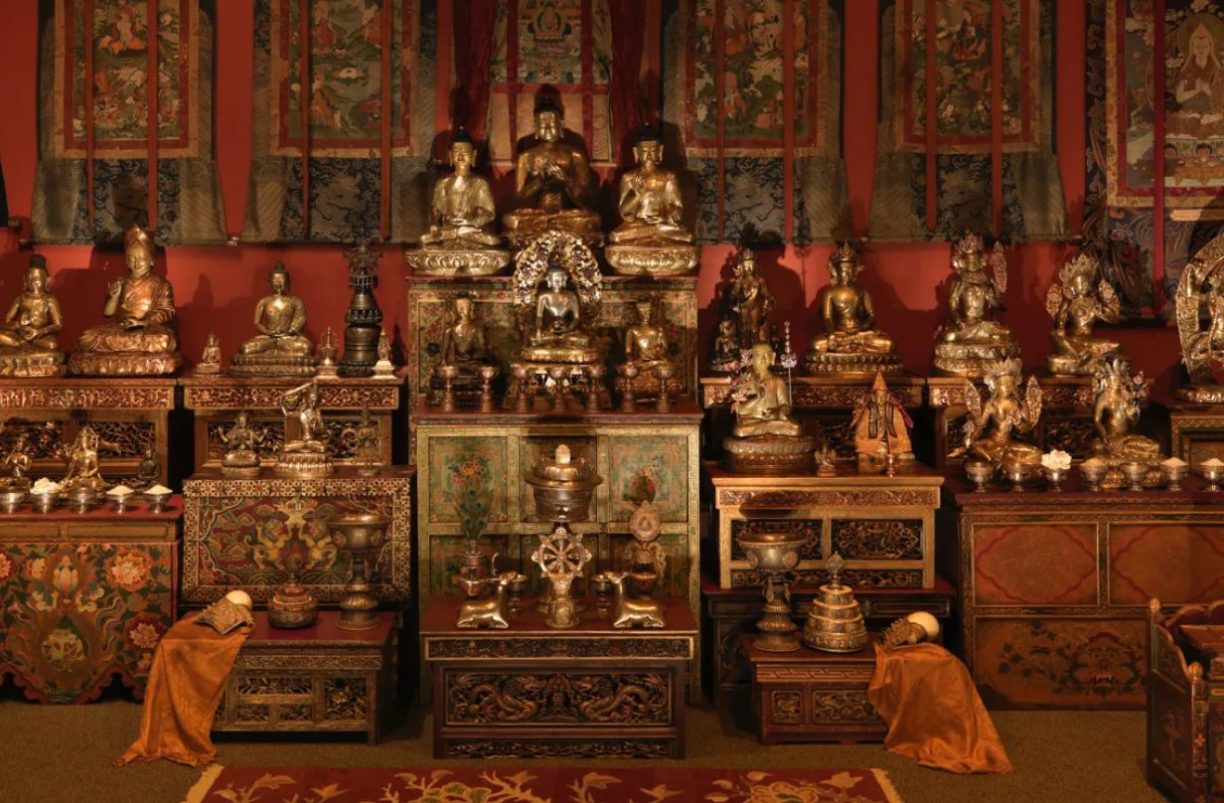
The National Museum of Asian Art's new Tibetan Buddhist Shrine Room is organized and installed to reflect Tibetan Buddhist concepts and customs.
Tibetan Buddhist Shrine Room
National Museum of Asian Art, Smithsonian Institution
Now open to visitors ongoing for the next three years
The Tibetan Buddhist Shrine Room includes more than two hundred bronzes, paintings, silk hangings, and carpets that were created in Tibet, China, and Mongolia between the thirteenth and early twentieth centuries. Arranged to reflect Tibetan Buddhist concepts and customs rather than museum conventions, the glittering room evokes the Himalayan portals that bridge the mundane and the sacred worlds. A counterbalance to traditional museum displays of sacred art, the shrine room is an immersive environment that invites visitors to encounter Tibetan Buddhist art in a manner evoking the sacred precincts of the Himalayas. The experience is multisensory, as flickering lights evoke butter-lamp offerings and the sonorous chanting of Tibetan monks fills the room. More than two hundred objects are exhibited on painted furniture rather than in glass cases, hung among traditional textiles rather than on white walls, and presented without the mediation of labels.
The assemblage of objects comprising the Tibetan Buddhist Shrine Room is the result of Dr. Alice S. Kandell’s longstanding appreciation and collecting of Tibetan sacred art, combined with her persistent desire to share this important collection with the public. Over decades, Kandell acquired hundreds of bronze sculptures, thangkas, textile banners, painted furniture, and ritual implements. Kandell’s interest in Tibetan art and culture began during her college years, when she took the first of many trips to Sikkim, Tibet, and Ladakh. Throughout her career as a child psychologist in New York, she continued to pursue her love of Tibetan Buddhist sacred art. Along with traveling and collecting, she documented the region’s works and culture in two books of photography, Sikkim: The Hidden Kingdom (Doubleday) and Mountaintop Kingdom: Sikkim (Norton). By 1994, Kandell had amassed one of the most comprehensive Tibetan art collections in the United States, which is documented in the book A Shrine for Tibet (Tibet House US). She made her first significant gift of objects to the Freer and Sackler in 2011, the same year she donated three hundred photographs taken on her Himalayan travels to the Library of Congress.
Supporting and expanding the visitor's experiences when visiting the Shrine Room itself, the museum's website offers a variety of informative multimedia educational materials to study and enjoy. Read more, click here
